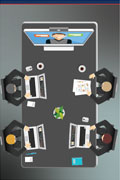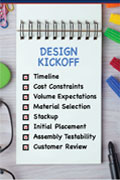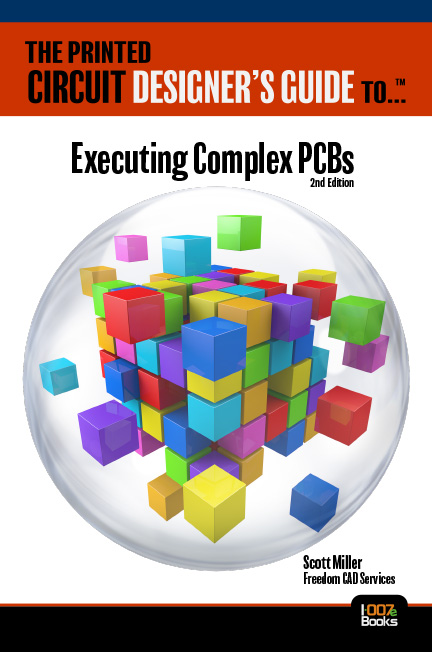Designing a complex circuit board today can be a daunting task. Never before have PCB designers on the cutting edge faced more formidable challenges, both electrical and mechanical.
This book, written by Freedom CAD COO Scott Miller, provides a set of guidelines for designing the most complex, high-speed circuit boards. He and his veteran PCB design team share real-world examples that can help designers sharpen their game, from the planning stages and schematic capture through documentation and successful data handoff.
Readers will learn how to design complex boards correctly the first time, on time. This book is a must-read for anyone designing high-speed, sophisticated printed circuit boards.
ISBN: 978-0-9980402-4-0
 Scott has spent over 40 years in the electronics industry. His early career focused on the interconnect field of high-performance connectors and printed circuit boards. Scott joined Freedom CAD Services in 2004 after a 20-year career with Teradyne Connection Systems (now Amphenol TCS) in sales and marketing.
Scott has spent over 40 years in the electronics industry. His early career focused on the interconnect field of high-performance connectors and printed circuit boards. Scott joined Freedom CAD Services in 2004 after a 20-year career with Teradyne Connection Systems (now Amphenol TCS) in sales and marketing.
Drawing on his experiences from the high-speed connector and PCB industries, Scott has helped Freedom CAD to develop its services beyond printed circuit board layout to include electrical, mechanical, and signal and power integrity engineering services as well as prototype PCB fulfillment.
Since being founded in 2003 by leaders of some of the industry’s most influential and well-regarded printed circuit board design and engineering firms, Freedom CAD Services has grown to become one of the largest independent printed circuit design service bureaus in North America.
Voted one of the top three companies to work for in New Hampshire, Freedom CAD specializes in the engineering and design of high-performance PCBs for the telecommunications, computer, medical, military/aerospace, industrial, storage, automotive, and consumer markets. Headquartered in Nashua, New Hampshire, the company has satellite design centers in California, Pennsylvania, Florida, Kentucky, Massachusetts, Maine, Virginia, North and South Carolina, and Texas.
Freedom CAD designers are well versed in complex, rules-driven, highly constrained, high-speed, analog, power supply, military, medical, and RF design technology, to name a few, utilizing all the well-supported and high-end software suites.
Freedom CAD is ISO 9001:2015 certified as well as ITAR registered with the Directorate of Defense Trade Controls (DDTC) and NIST 800-171 compliant for handling Controlled Unclassified Information (CUI).
 Stephen V. Chavez CID/CID+, IPC Designers Council
Stephen V. Chavez CID/CID+, IPC Designers Council
Stephen V. Chavez, CID/CID+, is a member of the IPC Designers Council Executive Board and a lead electrical designer at a large, globally recognized aerospace company. He is an IPC CID+ certified designer and has been involved with the PCB design industry, both domestically and internationally, for [...]
 John R. Watson CID, Legrand North America
John R. Watson CID, Legrand North America
John R. Watson, CID, has worked in the PCB design field for nearly 20 years. In that time, he has held almost every position available. As the senior PCB engineer, John leads a team of 50+ designers in multiple divisions spanning the world in the Building Control Division of Legrand North America. [...]
Chapter Summaries
-
Chapter 1
Communication
Chapter 1 explains why communication between the designer and fabricator is so important.
-
Chapter 2
Plan It Before You Design It
Chapter 2 discusses the importance of planning before even beginning a design.
-
Chapter 3
More Planning the Layout
Chapter 3 continues with other areas of pre-layout planning, including design constraints and guidelines.
-
Chapter 4
The Design Kickoff
Chapter 4 outlines a variety of elements necessary for a successful design kickoff.
-
Chapter 5
Design Rules, Simulations, and Analyses
Chapter 5 addresses several methods for achieving signal and power integrity in a complex design.
-
Chapter 6
Quality Assurance and Manufacturability
Chapter 6 highlights processes for building quality and manufacturability into your design.
-
Chapter 7
Post-layout Processes
Chapter 7 provides a wrap-up with a look at post-layout sign-off and design finalization.



